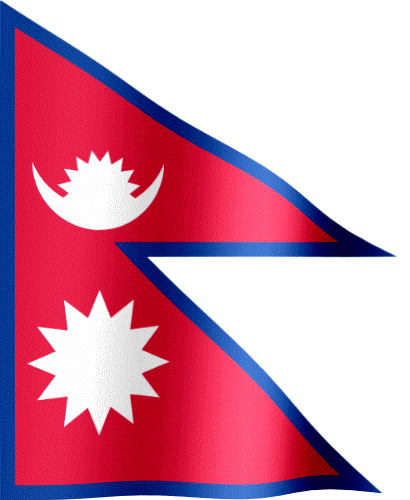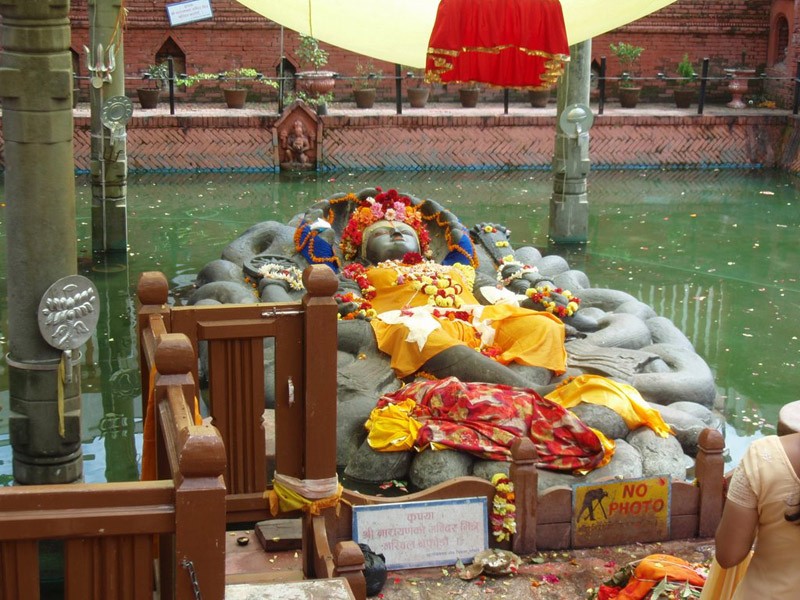Reference Code: IKS2WNP
Trip Start: Kathmandu
Trek Start: Sundarijal
Trek Days: 2 days
Age: 10 year to 70 years
Season: Spring, Summer and Autumn
Accommodation: Hotel and Resort
Service: Full board
Destination: Nepal
Trip End: Kathmandu
Trek End: Nagarkot
Trip Durations: 14 days
Physical Rating: Comfort
Group Size: 1-40
Theme: Sightseeing, cultural tour and hiking
Meals: Standard
The Kathmandu Valley
The Kathmandu Valley (Nepali: काठमाडौं उपत्यका) (Nepal Bhasa: स्वनिगः and also नेपाः गाः), located in Nepal, lies at the crossroads of ancient civilizations of Asia, and has at least 130 important monuments, including several pilgrimage sites for Hindus and Buddhists. There are seven UNESCO World Heritage Sites within this valley.
Historically, the valley and adjoining areas made up a confederation known as Nepal Mandala. Until the 15th century, Bhaktapur was its capital when two other capitals, Kathmandu and Lalitpur, were established. After the annexation of the valley by the Gorkha Kingdom, and subsequent conversion of the valley as the capital of their empire, the designation of "Nepal" was extended to every land they conquered.
The Kathmandu Valley is the most developed and populated place in Nepal. The majority of offices and headquarters are located in the valley making it the economic hub of Nepal. It is popular with tourists for its unique, rich, culture and architecture; including the highest number of jatras in Nepal. The valley itself was referred to as "Nepal Proper" by British historians.
Etymology
The city of Kathmandu is named after a structure in Durbar Square called Kaasthamandap. In Sanskrit, kāṣṭh (काष्ठ) = "wood" and maṇḍap (मंडप/मण्डप) = "covered shelter." This unique temple, also known as Maru Satal, was built in 1596 CE by King Laxmi Narsingh Malla. The entire structure contains no iron nails or supports and is made entirely from wood. Legend has it that the timber used for this two story pagoda was obtained from a single tree. As the city has many temples, it is also known as the City of Temples. Once a poet even told 'there are as many as temple as many head of people can be seen'.
History
The Kathmandu Valley may have been inhabited as early as 300 BCE, since the oldest known objects in the valley date to a few hundred years BCE. The earliest known inscription is dated 185 CE. The oldest firmly dated building in the earthquake-prone valley is almost 1,992 years old. Four stupas around the city of Patan, said to have been erected by a certain Charumati, a purported daughter of Ashoka the Great, a Mauryan king, in the 3rd century BCE, attest to the ancient history present within the valley. As with the tales of the Buddha's visit, there is no evidence supporting Ashok's visit, but the stupas probably do date to that century. The Kirats are the first documented rulers of the Kathmandu Valley; the remains of their palace are said to be in Patan near Hiranyavarna Mahavihara (called "Patukodon"). The Licchavi Dynasty whose earliest inscriptions date back to 464 CE were the next rulers of the valley and had close ties with the Gupta Dynasty of India. The Malla Dynasty ruled Kathmandu Valley and the surrounding area from the 12th until the 18th century CE, when the Shah Dynasty of the Gorkha Kingdom under Prithvi Narayan Shah conquered the valley as he created present-day Nepal. His victory in the Battle of Kirtipur was the beginning of his conquest of the valley.
Newars
The Newars are the indigenous inhabitants and the creators of the historic civilization of the valley. They are understood to be the descendants of the various ethnic and racial groups that have inhabited and ruled the valley in the two-millennia history of the place. At present, people from other parts of Nepal tend to migrate to the valley for a better life due to its high level of cultural and economic development.
Mythology
According to Swayambhu Puran, the Kathmandu Valley was once a lake, deemed by scientists as Paleo Kathmandu Lake. The hill where the Swayambu Stupa rests had lotus plants with beautiful lotus flowers abloom. One story says that the god Manjusri cut a gorge at a place called Kashapaal (later called Chobhar) with a sword called Chandrahrasha and drained away the waters in order to establish a habitable land. According to Gopal Banshawali, Krishna cut the gorge with his Sudarshana Chakra to let the water out. He then handed the drained valley to the Gopal Vansi people, who were nomadic cow herders.
Geography
The valley is made up of the Kathmandu District, Lalitpur District and Bhaktapur District covering an area of 220 square miles (almost the area of Singapore). The valley consists of the municipal areas of Kathmandu Metropolitan City, Lalitpur Submetropolitan City, Bhaktapur Municipality, Kirtipur Municipality and Madhyapur Thimi Municipality; the remaining area is made up of a number of Village Development Committees. The valley is a cultural and political hub of Nepal. The Kathmandu valley was accorded the status of a World Heritage Site by UNESCO in the year 1979. The major river flowing through the Kathmandu Valley is the Bagmati.
Places to see
Important monuments and places of Kathmandu Valley include:
• Kathmandu Durbar Square, Kathmandu
• Patan Durbar Square, Kathmandu
• Bhaktapur Durbar Square, Kathmandu
• Swayambhunath Stupa, Kathmandu
• Boudhanath Stupa, Kathmandu
• Pashupatinath Temple, Kathmandu
• Dharahara, Sahid Gate and Ghantaghar, Kathmandu
• Buddhanilkantha, Kathmandu
• Jal Binayak, Chobhar
• Nagarkot (Hill station), Bhaktapur
• Changu Narayan Temple, Bhaktapur
• Narayanhiti Palace, Kathmandu
• Godhavary Botanical Garden, Lalitpur
• National Museum of Nepal, Kathmandu
• Rani Ban, Kathmandu
• Dattarya Temple, Bhaktapur
• Balkumari Temple, Thimi
• Wakachhen Mahadev, Thimi
• Manjushree Temple, Majipa, Manjushree Tole
• Aditnath Temple, Chobhar
• Bagbhairav Temple, Kritipur
• Rani Pokhari, Kathmandu
• Temple of Karya Binayak
• Temple of Chandra Binayak, Kathmandu
• Temple of Surya Binayak in Bhaktapur
• Dakshinkali Temple South of Kritipur
• Pacchali Bhairav, Kathmandu
• Ecchanguu Temple, Kathmandu
• Amitav Bihar (White Gumba), Kathmandu
• Nyatapol Temple (Five-storeyed temple), Bhaktapur
• Nawadurga Temple, Bhaktapur
• Bungmati, Lalitpur
This valley hosts UNESCO World Heritage Sites composed of seven different Monument Zones: The centres of the three primary cities, Kathmandu Hanuman Dhoka, Patan and Bhaktapur, the two most important Buddhist stupas, Swayambhunath and Boudhanath, and two famous Hindu shrines, Pashupatinath Temple and Changu Narayan. Since 2003 the World Heritage List describes the site as being "in danger" out of concern for the ongoing loss of authenticity and the outstanding universal value of the cultural property.
In the past, Tibetan Buddhist Masters including Marpa, Milarepa, Rwa Lotsava, Ras Chungpa, Dharma Swami, XIII Karmapa, XVI Karmapa and several others visited and travelled in the Kathmandu Valley. However, the largest group of Tibetans came in the 1960s. Many settled around the Swayambhunath and Boudhanath Stupas. Many other famous Lamas known throughout the world have their Buddhist monasteries and centres in the Kathmandu Valley.
The 1500-year history of funerary architecture in the valley provides some of the finest examples of stone architecture found in the subcontinent. A Caitya is placed in almost all courtyards in cities like Patan. Stone inscriptions in the Kathmandu Valley are important sources for the history of Nepal.
Day 02 Sightseeing Pashupatinath and Boudhanath
06:00 Wake up
06:15 Break fast
07:00 Drive to Pashupatinath Temple with city guide and observe pashupatinath
11:45 Drive to Boudhanath
12:00 Lunch
12:45 Sightseeing in Boudhanath
16:30 Drive back to Hotel
Day 03 One Hour Mountain Flight, Kapan Monastery and Kathmandu Durbar Square
05:00 Wake up
05:20 Break fast
05:45 Drive to Domestic airport
06:30 1 hour Mountain flight
08:00 Drive to Kapan Gumba
12:00 Lunch
12:45 Drive to Kathmandu Durbar Square
18:00 Drive to Hotel
Day 04 Budhanilkantha and Narayanhiti Royal Palace Museum
06:00 Wake up
06:30 Break fast
07:30 Drive to Budhanilkantha
11:00 Drive to Thamel
12:00 Lunch
12:45 Drive to Narayanhiti Royal Palace Museum
15:30 Drive to Thamel
16:00 walking in Thamel tourist market
18:30 Walking back to Hotel
Day 05 Soyambhunath Stupa, Chauni National Museum and Seto Monastery
06:00 Wake up
06:30 Break fast
07:00 Drive to Soyambhunath(Monkey Temple) and sightseeing
9:45 Drive to Chauni National Museum and observation
12:00 Lunch
12:45 Drive to Seto Gumba(Sitapaila Gumba)
17:30 Drive to Hotel
Day 06 Drive to Sundarijal and trek to Chisapani
06:00 Wake up
06:30 Break fast
07:30 Drive to Sundarijal
8:30 Trek to Chisapani
Day 08 Bhaktapur Sightseeing and drive to Dhulikhel Resort
04:30 Wake up
05:00 Observing Sunrise view in Everest Mountains from Nagarkot
07:00 Breakfast
08:00 Trek to Bhaktapur and immediately sightseeing in Bhaktapur Durbar Square Area
16:00 Drive to Dhulikhel Resort
Day 09 Sightseeing Namo Buddha
6:00 Wake up
6:30 Break fast
8:00 Drive to Namo Buddha
12:00 Simple lunch at Namo Buddha
16:30 Drive back to Dhulikhel
Day 11 Full day Patan city sightseeing
06:00 Wake up
06:30 Break fast
07:15 Drive to Golden Temple
09:00 Walk to Patan Durbar Square
12:00 Lunch
12:45 Visit Patan Museum
15:30 Walk to Minnath Temple
16:15 Walk to Mahalaxmithan
17:00 Drive to Kathmandu
Day 12 Full day Kritipur city sightseeing
06:00 Wake up
06:30 Break fast
07:00 Drive to Dachinkali Temple
10:30 Drive to Jal Binayak Temple
11:00 Drive to Tau daha
11:30 Drive to Kirtipur
12:30 Lunch
13:15 Drive to Bag Bhairav Temple
14:45 Drive to Adinath Temple
16:00: Drive to Uma Maheshwor Temple
17:30 Drive back to Hotel
Day 14: Final departure to next destination
Note: This itinerary can be costomized as per your wish and enthusiasm.
Inclusion
Note: The cost includes varies with the enthusiam of the sightseeing person so, includes will be delivered as per request only.


